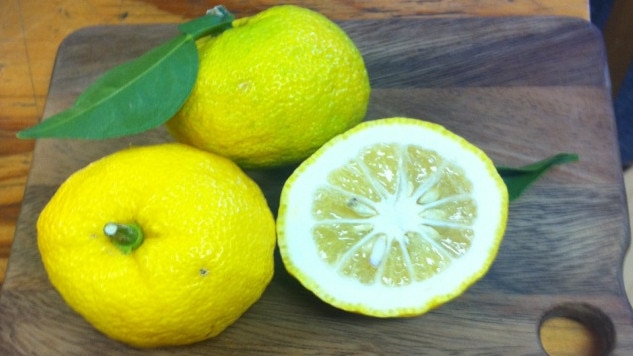Who knew, yuzu?
A relentless pursuit of the new means chefs introduce us to lots of things we’ve never heard of. Often with mixed results...

Bottarga. Panko. Makrut. Poblano. The food words that ultimately become part of the vernacular keep coming at us. Ingredients. Products. Techniques. Producers. Given our ethnic diversity, our variety of restaurants, our proclivity for travel and our preoccupation with food, I reckon the average Australian would score pretty well in a Hard Quiz food vocabulary special.
Through a relentless pursuit of the new, fuelled by social media and adventurous suppliers, chefs introduce us to things we’ve never heard of – all the time. Often with mixed results. Many become part of the lexicon; others disappear fast. Remember tonka beans? Milk skin? Spherification? Who’d heard of Wagyu beef 20 years ago? Dashi? Finger lime? Aleppo pepper?
And who’d heard of yuzu? Yet it’s difficult to zip through a menu these days without encountering this subtle citrus with Japanese/Korean roots. It turns up as a juice used to make jellies and curds; in authentic ponzu sauce; and in the chilli paste du jour, yuzu kosho. According to Nancy Singleton Hachisu’s essential Japan: The Cookbook, the yuzu fruit – about half the size of a lemon – “is an intense, low-acid citrus… only the peel of green early autumn yuzu is used, while both the greenish-yellow peel and the juice are used once the fruit matures in late autumn. Closer to spring, as the juice dries up and the fruit becomes pithy, the yellow peel is used.”
I’d never seen a yuzu in the flesh until recently, when a nice chap messaged to say he was growing them at Donnybrook in WA and would like to drop some off. When life brings you yuzus… Mature/ripe, they’re soft and knobbly, like some mandarins, have lots of large pips and yield relatively little juice compared with most varieties of lemon. So yuzu juice is expensive, which is probably why a lot of ponzu recipes use lemon instead. But it has its own fragrance and a sourness that’s less assertive than lemon, and the slightly floral zest has its own uses.
Making ponzu is easy enough and there are a lot of recipes out there: essentially, you mix equal quantities of mirin and Japanese cooking sake and set it alight until the alcohol burns off before adding an equal volume of soy, some kombu for mouthfeel, bonito flakes for meaty/fishy/savoury body, rice vinegar and yuzu juice for sourness and acid. Let it steep a while; filter and bottle. Find some raw fish.
And yuzu kosho? There are two styles, according to Hachisu: green (zest and chillies) and red (chillies and yellow zest) made when both fruits are riper. Mix equal quantities of each with six per cent mineral salt and let it ferment for a month. Or not. My yuzus were definitely ripe, so too little chillies from the garden, but they were more Bangkok than Osaka. It’s a challenging condiment. Like vocabulary itself, we keep learning.


